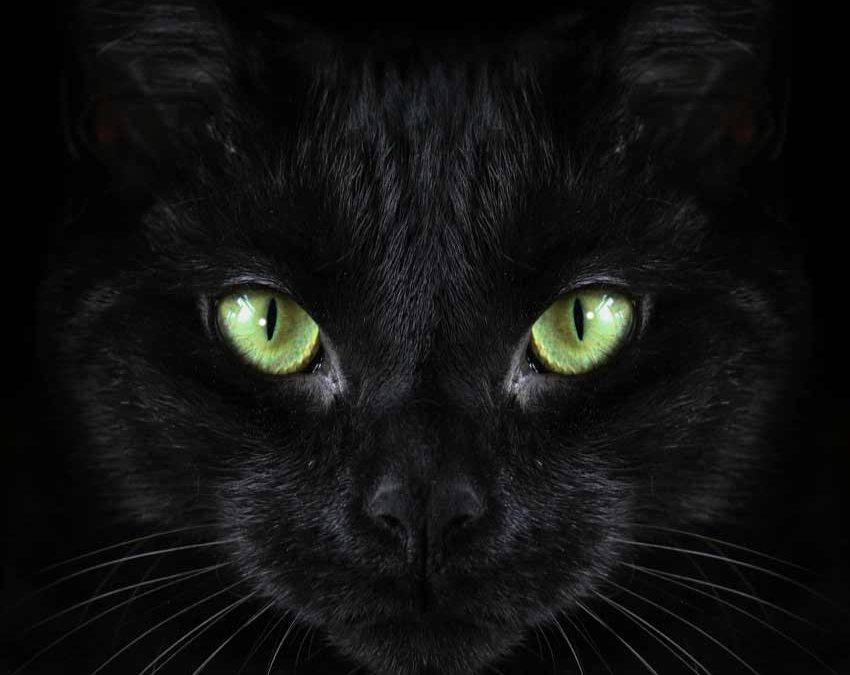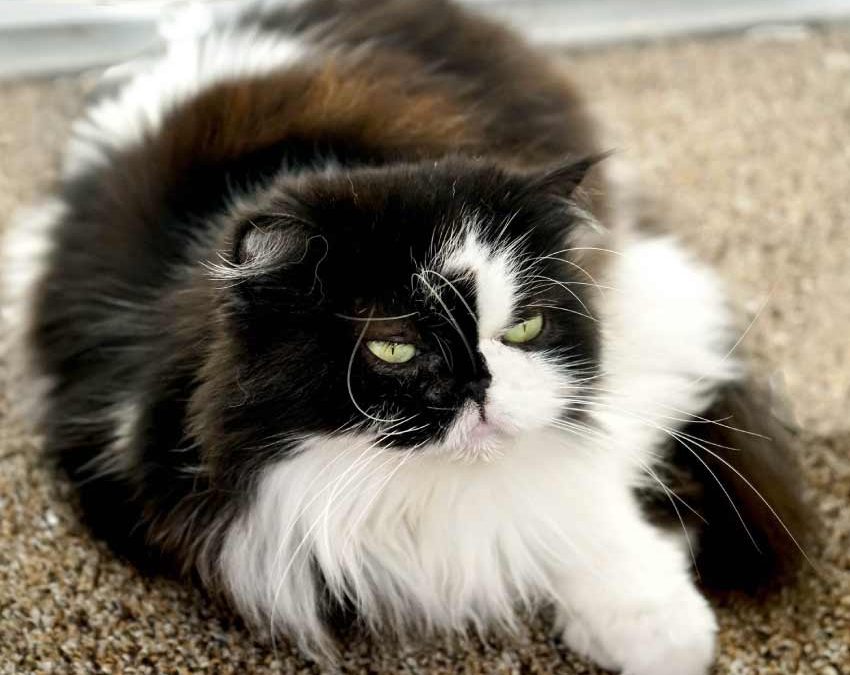
Black Cats With Green Eyes
Introduction to black cats with green eyes
Black cats with green eyes are a unique and striking type of feline. Black cats are known for their sleek and mysterious appearance, and when combined with the vividness of green eyes, they become even more fascinating. Green eyes in cats are caused by a combination of genetics and melanin, which is the pigment that gives cats their coat color.
The intensity of the green colour can vary depending on the amount of melanin present in the iris of the eye. Black cats have a long and complex history, often associated with superstition and mythology. In some cultures, black cats are considered to bring good luck and fortune, while in others, they symbolize bad luck and evil.
Despite these beliefs, black cats with green eyes are loved and admired by many for their striking beauty and unique personality.
Overall, black cats with green eyes are a stunning and captivating type of feline that has captured the hearts of many cat lovers.

The History of black cats in different cultures
The history of black cats in different cultures is a complex and fascinating topic, with many different beliefs and superstitions surrounding these animals. Here are a few examples:
Ancient Egyptians: In ancient Egyptian culture, cats, in general, were highly respected and even worshipped as sacred animals. Black cats were believed to bring good luck and fortune and were often depicted in art and literature.
Medieval Europe: During the Middle Ages in Europe, black cats were associated with witchcraft and were believed to be companions of witches. This led to a widespread fear of black cats, with many people believing that they were evil and could bring bad luck.
Japan: In Japan, black cats are seen as symbols of good luck and fortune. In fact, it is believed that if a single woman owns a black cat, she will attract many suitors.
Scotland: In Scottish folklore, a black cat appearing on your doorstep is a sign of prosperity and good luck. However, if a black cat crosses your path, it is considered bad luck.
United States: In the United States, black cats have been associated with Halloween and other spooky occasions. Many people believe that they are unlucky, and some animal shelters will not adopt black cats around Halloween out of fear that they may be mistreated.
Despite
England: In England, black cats were often seen as bringers of good luck, and were even believed to protect homes from evil spirits. Sailors would often keep black cats on their ships, as it was thought that they would ensure a safe journey.
India: In India, black cats are also considered to be lucky, especially if they cross your path from left to right. They are also believed to bring wealth and prosperity to their owners.
Ancient Rome: In ancient Rome, black cats were associated with the goddess Diana, who was often depicted with a black cat by her side. Black cats were also believed to protect homes and families from evil spirits.
Ireland: In Irish folklore, black cats were believed to have the power to cure illness and disease. It was also believed that if a black cat crossed your path, it was a sign that good luck was on its way.
Despite
Scandinavia: In Scandinavian countries, black cats were believed to be able to see the future and predict the weather. It was also believed that if a black cat was seen at a wedding, it would bring the couple good luck.
Middle East: In some Middle Eastern cultures, black cats are considered to be sacred and are believed to possess magical powers. They are often seen as protectors and are kept as pets in many households.
Africa: In some parts of Africa, black cats are seen as spiritual beings and are believed to have a connection to the spirit world. They are often associated with witchcraft and are sometimes used in rituals and ceremonies.
Despite the many beliefs and superstitions surrounding black cats in different cultures, it is important to remember that they are just animals and should be treated with love and respect. They make wonderful pets and companions, and their unique appearance and personality traits have made them beloved by many people around the world.
Exploring the genetics behind black cats and green eyes
The genetics behind black cats and green eyes is complex and involves multiple genes controlling coat and eye colour.
Two genes determine cat coat color: the melanocortin 1 receptor (MC1R) gene and the agouti signalling protein (ASIP) gene. The MC1R gene controls melanin production, the pigment that gives cats their color.
The ASIP gene regulates the distribution of melanin in the hair shaft. In black cats, the MC1R gene produces large amounts of melanin, while the ASIP gene prevents the expression of any color except black.
Multiple genes also determine eye color in cats. The green color of a cat’s eyes is caused by a combination of yellow and blue pigments. The yellow pigment in the iris is determined by the presence of the oculocutaneous albinism II (OCA2) gene.
This gene also controls the production of melanin in the skin and hair. The blue pigment in the iris is caused by the scattering of light, which is influenced by the structure of the iris.
Therefore, for a black cat to have green eyes, it must carry the genes that control both black coat colour and green eye color. It is also possible for a black cat to have other eye colors, such as gold or yellow, depending on the combination of genes inherited from its parents.
In conclusion, the genetics behind black cats with green eyes is a fascinating and complex topic involving multiple genes that control coat and eye color.
The unique combination of these genes creates the striking appearance of black cats with green eyes, which has captured the attention and admiration of many cat lovers.
Myths and superstitions surrounding black cats with green eyes
Several myths and superstitions surround black cats with green eyes, some of which are rooted in history and culture. Here are a few examples:
Bad luck: In some cultures, black cats with green eyes are considered to be harbingers of bad luck. This belief likely stems from medieval Europe, where black cats were associated with witchcraft and were believed to be witches’ companions. This led to a widespread fear of black cats, with many people believing they were evil and could bring bad luck.
Good luck: In contrast, in some cultures, black cats with green eyes are believed to bring good luck. For example, in Japan, black cats are seen as symbols of good luck and fortune. It is also believed that if a black cat appears on your doorstep, it is a sign of prosperity and good luck.
Supernatural powers: Black cats with green eyes are sometimes associated with supernatural powers or abilities. In ancient Egypt, cats were considered to be sacred animals and were believed to have supernatural powers. This belief continued in other cultures, where black cats with green eyes were believed to have the ability to see into the spirit world or predict the future.
Halloween: Black cats with green eyes are often associated with Halloween and other spooky occasions. Some people believe that they are more likely to encounter a black cat with green eyes during this time, and that the cat may be a sign of something supernatural or ominous.
It is important to remember that these beliefs and superstitions are not based in fact, and that black cats with green eyes are just like any other cat. They are playful, affectionate, and make wonderful pets. It is up to us to challenge these superstitions and treat all animals with kindness and respect.
Protective powers: In some cultures, black cats with green eyes are believed to have protective powers. For example, in Scotland, it is believed that a black cat entering a home signifies that good fortune is on its way and that the cat will protect the home from harm. In some parts of England, owning a black cat is believed to protect a sailor from danger while at sea.
Satanic associations: Unfortunately, some people still associate black cats with Satanism or witchcraft, leading to acts of cruelty and abuse against black cats. For example, some people have been known to harm or even kill black cats on Halloween, believing that this will bring them good luck or protect them from evil. It is important to remember that these beliefs are unfounded and that all cats deserve to be treated with love and kindness.
Mystical and magical qualities: Some people believe that black cats with green eyes possess mystical or magical qualities, such as the ability to bring good fortune or ward off evil. These beliefs have persisted throughout history and are still held by some people today.
Overall, the myths and superstitions surrounding black cats with green eyes are varied and complex and often reflect the beliefs and values of different cultures and societies. While some of these beliefs may seem harmless, it is important to remember that they can also lead to prejudice and discrimination against black cats. As responsible pet owners and animal lovers, we should strive to challenge these beliefs and treat all animals with respect and compassion.









[…] Which foreign pets are legal in Washington State? […]